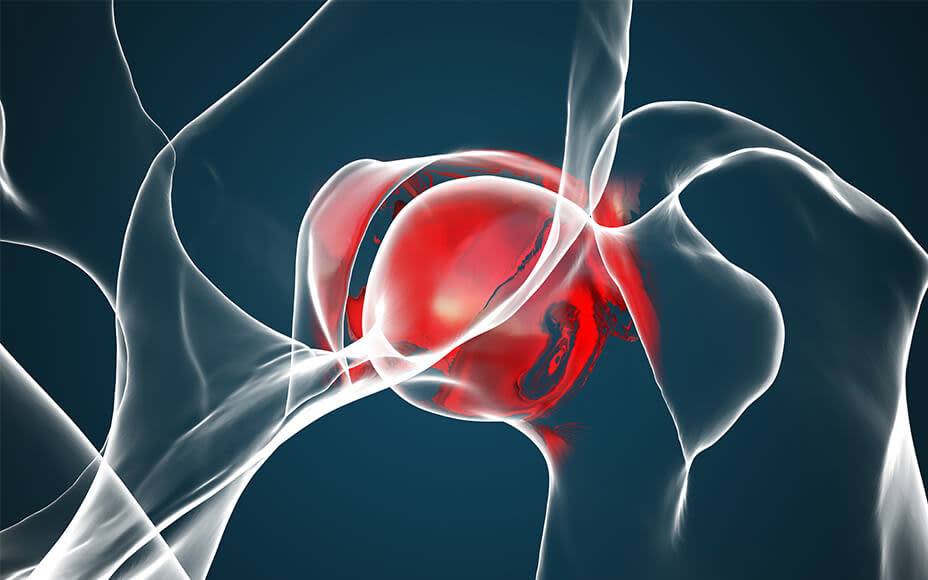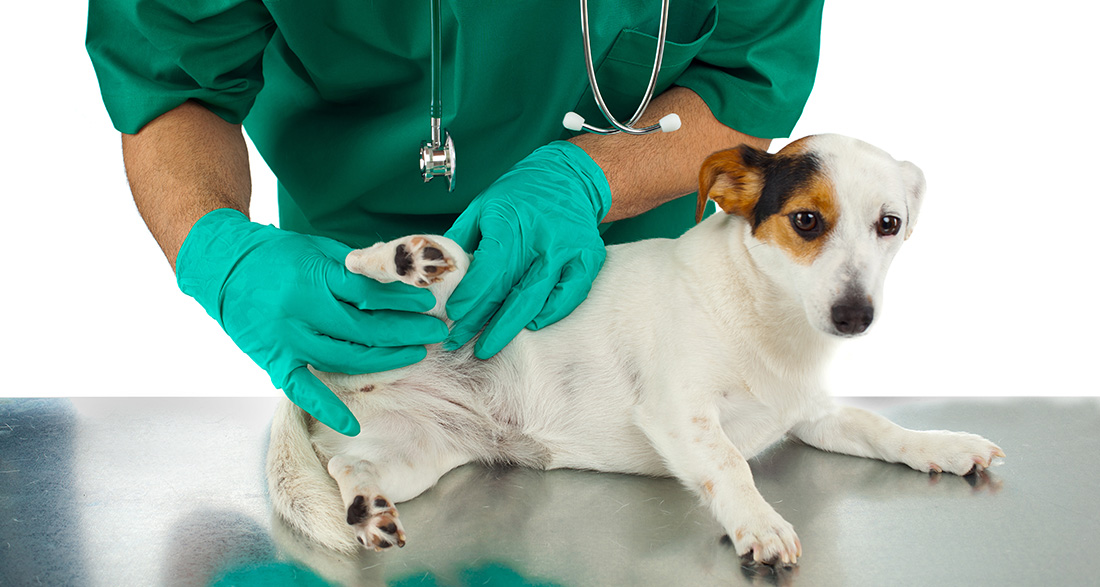What is Hip Dysplasia in Dogs, what symptoms are associated with it, and what treatment options are available? Learn more about the topic of HD in dogs here.
- Hip Dysplasia in Dogs: How to Help Your Canine Companion
- Cause: How Does Hip Dysplasia Develop in Dogs, and What Is It?
- Symptoms: How to Recognize Hip Dysplasia in Dogs
- Diagnosis of Hip Dysplasia
- How is Hip Dysplasia Treated in Dogs?
- When is Hip Dysplasia Surgery Necessary for Dogs, and What is the Cost?
- What Helps My Dog with Hip Dysplasia?
Hip Dysplasia in Dogs: How to Help Your Canine Companion
Hip joint dysplasia, or simply hip dysplasia, is a common concern, especially in large dog breeds like the German Shepherd. Severe limitations in movement and intense pain, leading to immobility, are just a fraction of what dogs with such a joint condition may experience. Learn here how to recognize hip dysplasia, how veterinarians treat it, and how you can support your dog.
Cause: How Does Hip Dysplasia Develop in Dogs, and What Is It?
In almost all cases, dogs are born with hip dysplasia when genetically predisposed, and it is rarely “acquired” through improper postures in their lifetime. A malformation in the hip joints leads to the hip not forming correctly, being deformed, and unable to allow normal movements.
Where the thigh joint head lies in the hip socket of healthy dogs and glides during movements, in hip dysplasia, it regularly slips out of the socket. The reason: Due to the malformation, both joint parts do not anatomically fit together. As a result, the cartilage is also affected, wearing down quickly and strongly due to friction, causing further conditions like arthritis with joint deterioration.

Symptoms: How to Recognize Hip Dysplasia in Dogs
How does hip dysplasia manifest in dogs? Hip dysplasia causes pain in dogs, which often initially manifests as a refusal to move. It is essential to listen to your furry friend, and if you notice the following signs, consult your trusted veterinarian:
- Swinging gait: What might look like a practiced hip sway and could make some belly dancers jealous is a serious symptom.
- Cracking joints
- Tension
- Pain when the back or hip region is touched
- Warm hip joints
- Avoidance of running, climbing stairs, jumping
- Difficulty sitting, even during a walk
- Difficulty lying down and getting up
- Pain expressed through howling or whimpering
- Hopping: Your canine companion can no longer use its hind legs alternately in a brisk walk and hops with both hind legs simultaneously.
- Muscle atrophy
Does My Dog Have Hip Dysplasia?
If you observe multiple symptoms in your dog, there is a possibility that your dog is suffering from hip joint dysplasia. However, only your veterinarian can accurately determine this, as the disease is literally beneath the skin, and a comprehensive diagnosis is necessary.
Diagnosis of Hip Dysplasia
Once in the veterinarian’s office, your furry friend will undergo a thorough examination. Veterinarians first palpate the body and stretch the hip joint using specific methods. This helps them determine whether it causes pain in your dog and whether the joints are still flexible. Using the Ortolani test, the professional deliberately provokes the joint to make the joint head briefly jump out of the socket.

Through the distinctive gait that dogs exhibit with this condition, a trained eye can often determine whether hip dysplasia is present through observation alone. The suspicion can be confirmed through an X-ray examination, which precisely reveals the faulty development of the hip joint.
How is Hip Dysplasia Treated in Dogs?
Conservative Methods:
An immediate surgery is not always necessary. As of now, hip dysplasia, much like arthritis, cannot be completely cured. However, there are several options to restore your dog’s quality of life.
If the HD is not too advanced, the veterinarian may prescribe physiotherapy for your dog. The goal is to preserve and build muscle and maintain freedom of movement. Pain relievers and anti-inflammatory medications alleviate pain and facilitate your dog’s mobility. The joint’s head can be immobilized in the joint socket using bandages or casts. This bandage is left for a while to prevent dislocation and strengthen the muscles.
A Healthy Diet is Crucial:
In the next step, your dog’s diet is usually adjusted. A healthy diet should be your top priority, as it significantly influences your dog’s health. You can support your furry friend’s joint and cartilage health with essential minerals.
With our iHugDogs Wet Food VET Joint Fit, we are by your side even in challenging times. Fresh salmon is rich in valuable Omega-3 fatty acids, such as EPA, which can support joint health and brain function. The important green-lipped mussel in joint diseases contains the glycosaminoglycans chondroitin and glucosamine, which can support cartilage metabolism and cartilage health.
Additionally, you can support your dog with suitable oil, such as our Omega Joint Oil or special joint tabs. Supporting joints with oil and tabs, how does that work? Essential substances like New Zealand green-lipped mussel, fish oil, MSM, and hyaluronic acid have been proven to promote joint metabolism.
When is Hip Dysplasia Surgery Necessary for Dogs, and What is the Cost?
If hip dysplasia is advanced, and the genetic predisposition is so strong that your dog is constantly in pain, and conservative methods do not lead to the desired success, surgery is the best solution for your dog. The goal of the surgery is to reposition the constantly dislocating joint head back into the socket and ensure it stays there.
The spectrum of surgeries is diverse. The veterinarian chooses the one based on your dog’s age, size, weight, and the extent of the disease. Options include:
- Artificial hip joint (TEP)
- Gold implant
- Denervation
- Femoral repositioning
- Triple pelvic osteotomy

The costs of surgery depend on the necessary method. The artificial hip joint is the most expensive, surpassing the $5,000 limit, including anesthesia, overnight stay, and aftercare. Methods like the triple pelvic osteotomy cost between $1,200-$1,500 per hip. The range is wide. If you want to avoid paying such sums, we recommend getting pet insurance – especially for pre-disposed, large dog breeds such as the German Shepherd, Bernese Mountain Dog, Boxer, and Golden Retriever.
What is the Life Expectancy with Hip Dysplasia, and How Long Do Dogs Live with It?
If you fear that your furry friend has HD and wonder what it means for your future life together, know that the disease itself is not responsible for shortening your dog’s life. However, if HD is not treated properly, and your dog is not well-medicated, they will experience additional pain due to wear and tear in old age. It is more about maintaining long-term quality of life through optimal treatment.
What Helps My Dog with Hip Dysplasia?
There is also much you can do to help your dog. This includes preventing your dog with hip dysplasia from jumping. Movements like climbing stairs should ideally be avoided for your dog. Targeted movements, like during a regular walk and during physiotherapy, are essential. Anything that compresses and overloads the joints can worsen the symptoms.
Moist wraps and wrapped ice packs can relieve painful areas and reduce swelling when your dog experiences hip problems.
It is also important that your furry friend does not suffer from overweight. To relieve the joints, it is crucial to adjust the diet and feeding recommendations so that your dog does not consume too much energy, which cannot be utilized due to restricted movement. If your dog has a bit too much weight, you should initiate weight loss measures in consultation with the veterinarian’s office.
Furthermore, prevention is better than cure. If you adopt a puppy, thoroughly research where you get it from. Avoid hobby breeders without certification and papers, even if there is offspring on the neighboring farm. Undetected hereditary diseases are passed on this way and sometimes only become visible after years. In contrast, reputable breeders must have the parent animals tested for HD and are only allowed to breed when fully healthy.


